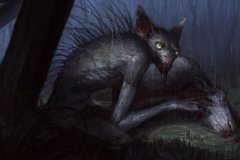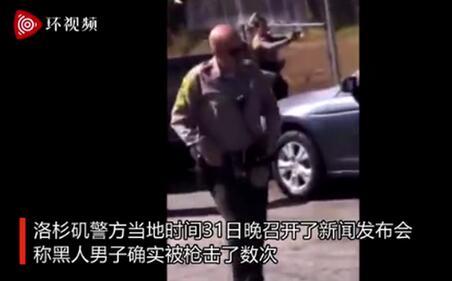选择图像中的ImageView一部分并检索选定的矩形的终点矩形、终点、图像、ImageView
我需要拖动和选择在 ImageView的设定的图像的一部分,并检索所选的矩形的终点,而不会造成任何修改(例如作物)。
I need to drag and select a portion of an image set in an ImageView and retrieve the end points of the selected rectangle without causing any modifications (such as crop).
到目前为止,我所能够做的就是找出坐标,用户点击屏幕的角度。
So far all I've been able to do is figure out the co-ordinates of the point where the user taps the screen.
ImageView imageView = (ImageView) findViewById(R.id.imageView);
imageView.setOnTouchListener(new View.OnTouchListener() {
@Override
public boolean onTouch(View v, MotionEvent event) {
//Simply displays a toast
Utilities.displayToast(getApplicationContext(), "Touch coordinates : " +
String.valueOf(event.getX()) + "x" + String.valueOf(event.getY()));
return true;
}
});
但是,这还远远没有我想要的人。我真的一直没能找到任何关于计算器/谷歌有关。
But this is far from where I want to be. And I really haven't been able to find anything related on StackOverFlow/Google.
我怎样才能实现呢?
推荐答案
这里有一种方法,你可以使用(但是,有很多的可能性,以实现相同)。它是基于创建自定义视图绘制选择矩形和跟踪。另外,你可以只从 onTouch应用逻辑()在你的自定义视图 OnTouchListener()。
Here's one way, that You can use (however, there's lot of possibilities to implement the same). It's based on creation of custom View for drawing and tracking of selection rectangle. Also, You can just apply the logic from onTouch() of custom view in yours OnTouchListener().
主要布局:
<RelativeLayout
xmlns:android="http://schemas.android.com/apk/res/android"
android:layout_height="match_parent"
android:layout_width="match_parent"
android:id="@+id/root"
android:background="@android:color/background_dark">
<ImageView
android:layout_width="match_parent"
android:layout_height="match_parent"
android:id="@+id/image"
android:src="@drawable/up_image"
android:scaleType="fitXY" />
<com.example.TestApp.DragRectView
android:layout_width="match_parent"
android:layout_height="match_parent"
android:id="@+id/dragRect" />
</RelativeLayout>
自定义视图:
Custom view:
import android.content.Context;
import android.graphics.Canvas;
import android.graphics.Paint;
import android.graphics.Rect;
import android.text.TextPaint;
import android.util.AttributeSet;
import android.view.MotionEvent;
import android.view.View;
public class DragRectView extends View {
private Paint mRectPaint;
private int mStartX = 0;
private int mStartY = 0;
private int mEndX = 0;
private int mEndY = 0;
private boolean mDrawRect = false;
private TextPaint mTextPaint = null;
private OnUpCallback mCallback = null;
public interface OnUpCallback {
void onRectFinished(Rect rect);
}
public DragRectView(final Context context) {
super(context);
init();
}
public DragRectView(final Context context, final AttributeSet attrs) {
super(context, attrs);
init();
}
public DragRectView(final Context context, final AttributeSet attrs, final int defStyle) {
super(context, attrs, defStyle);
init();
}
/**
* Sets callback for up
*
* @param callback {@link OnUpCallback}
*/
public void setOnUpCallback(OnUpCallback callback) {
mCallback = callback;
}
/**
* Inits internal data
*/
private void init() {
mRectPaint = new Paint();
mRectPaint.setColor(getContext().getResources().getColor(android.R.color.holo_green_light));
mRectPaint.setStyle(Paint.Style.STROKE);
mRectPaint.setStrokeWidth(5); // TODO: should take from resources
mTextPaint = new TextPaint();
mTextPaint.setColor(getContext().getResources().getColor(android.R.color.holo_green_light));
mTextPaint.setTextSize(20);
}
@Override
public boolean onTouchEvent(final MotionEvent event) {
// TODO: be aware of multi-touches
switch (event.getAction()) {
case MotionEvent.ACTION_DOWN:
mDrawRect = false;
mStartX = (int) event.getX();
mStartY = (int) event.getY();
invalidate();
break;
case MotionEvent.ACTION_MOVE:
final int x = (int) event.getX();
final int y = (int) event.getY();
if (!mDrawRect || Math.abs(x - mEndX) > 5 || Math.abs(y - mEndY) > 5) {
mEndX = x;
mEndY = y;
invalidate();
}
mDrawRect = true;
break;
case MotionEvent.ACTION_UP:
if (mCallback != null) {
mCallback.onRectFinished(new Rect(Math.min(mStartX, mEndX), Math.min(mStartY, mEndY),
Math.max(mEndX, mStartX), Math.max(mEndY, mStartX)));
}
invalidate();
break;
default:
break;
}
return true;
}
@Override
protected void onDraw(final Canvas canvas) {
super.onDraw(canvas);
if (mDrawRect) {
canvas.drawRect(Math.min(mStartX, mEndX), Math.min(mStartY, mEndY),
Math.max(mEndX, mStartX), Math.max(mEndY, mStartY), mRectPaint);
canvas.drawText(" (" + Math.abs(mStartX - mEndX) + ", " + Math.abs(mStartY - mEndY) + ")",
Math.max(mEndX, mStartX), Math.max(mEndY, mStartY), mTextPaint);
}
}
}
活动很简单:
Activity is simple:
public class MyActivity extends Activity {
private static final String TAG = "MyActivity";
@Override
protected void onCreate(Bundle savedInstanceState) {
super.onCreate(savedInstanceState);
setContentView(R.layout.main);
final DragRectView view = (DragRectView) findViewById(R.id.dragRect);
if (null != view) {
view.setOnUpCallback(new DragRectView.OnUpCallback() {
@Override
public void onRectFinished(final Rect rect) {
Toast.makeText(getApplicationContext(), "Rect is (" + rect.left + ", " + rect.top + ", " + rect.right + ", " + rect.bottom + ")",
Toast.LENGTH_LONG).show();
}
});
}
}
}
的输出是这样的:
The output is like the following:
上一篇:Android的 - 拍摄的照片照片、Android
下一篇:BitmapFactory.de codeStream总是返回null和Skia的德codeR显示德code返回falsecodeStream、null、BitmapFactory、de









